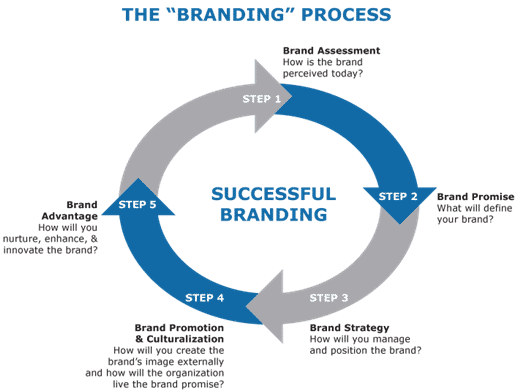A branding strategy refers to a plan regarding the long-term, specific goals that can be reached by a company. It encompasses the combined components of the business’ character which make it easily identifiable by the audience. Many people mistake it for the website, the name, the logo, or the product, but a brand is all these and much more. Today we are going to look at some branding strategies that are in trend this year.
Branding Strategies You Should Consider for Your Business
1. Offer a Premium Product/Service
One of the first branding strategies that will have success this year is offering an excellent product or service. Your priority should be giving your customers quality on any occasion. Moreover, if you offer a high-quality product, you can always raise the price. Here you have a couple of things you should keep in mind when choosing this strategy:
- Create a great design
If you want to become a premium brand, everything about your business should prove class. From the logo, to the package, to the clothes your staff has, make sure everything is perfect. At the same time, the quality should be reflected in the brand’s activity through the telephone or on social media.
- Identify your ideal buyer
Knowing your ideal buyer is essential when deciding on one or several branding strategies. It’s essential to identify what are the best places to promote your services or products to attract the ideal buyers. You should use some quality market research companies or other brand agencies to help you out. Moreover, you must identify the needs and desires your premium customers have.
- Luxury or premium?
There is a big difference between these two categories of brands. While a luxury brand niches only on extremely wealthy customers, a premium one can target a bigger market. Think of the difference between Apple and Dior, for example.

2. Brand Appropriation
If you want to learn how to develop a brand strategy that will be successful, you can go for the brand appropriation option. This consists of piggy-backing off a different brand through association. For instance, you can get an endorsement from a national company, and then use their logo (with permission) on your own marketing collateral. However, there’s a big risk involved in this, since people may end up confusing or permanently associating the two.
It’s extremely important to ask for the other company’s permission before adopting this brand strategy. Usually, the bigger a company is, the less likely they are to agree to such practices. Moreover, a large brand has the necessary resources to sue a copyright infringement, for instance. Alternatively, you can simply buy another popular brand if your budget allows it.
3. Anti-Branding
One of the most controversial brand strategy examples is anti-branding. This relies on the close association that exists between successful brands, names, logo designs, and other such marketing tools. The supermarket white label or own brand is one of the most successful techniques. Consumers are made to think that they are getting the same level of quality for a product for a lower price. Whether this is true or not, the company can cut down on their production costs with simple logo designs, basic packaging or other limited ads.
Some variations of this strategy are creating a customer niche or a different aesthetic. For example, a certain company may attract anti-capitalist movements or green issues supporters. One relevant case is that of Starbucks, which changed the name of one Seattle store to 15th Avenue Coffee and Tea to cater to the local target.
4. Cult Brand Strategy
The first step when creating a cult brand strategy is to create your own niche. There are many ways in which you can differentiate yourself from the rest of the market. You can offer better products, lower prices, have more ethics, etc. Even if you can’t compete with the other big leaders, you can still be original in what you’re doing.
After you set up your own brand, it’s important to be consistent. In today’s market, you can see hundreds of new companies coming and going. One of their biggest mistakes is that they’re not consistent. A loyal customer expects your business to behave in a certain way and to offer certain products.

5. The ‘Experts Recommend’ Strategy
When it comes to branding strategies, you should take advantage of people’s willingness to believe others. It’s in human’s nature to listen and pay attention to experts, doctors, dentists, scientists, etc. Just look at the way early ads, in the 1920s, promoted smoking as a healthy activity and even quoted doctors recommending certain brands.
As such, the next logical step is to identify who are the influencers for your industry. Look for an expert in the field (or even a group of them) who would back up your brand. Keep in mind that they don’t need to wear white coats to have credibility. For example, when it comes to baby products, the most credible experts are other mothers.
6. Emotional Branding
For our last example of great branding strategies, let’s have a look at Harley Davidson. Most likely you’ve heard about it before and know about its astounding success. So why do people prefer to pay thousands of dollars more for a Harley instead of buying a cheaper bike that has the same quality? The answer lies in emotions. Harley Davidson knows how to use emotional branding so they created a community around their brand.
People who are in the HOG (Harley Owners Group) feel like they are connected both to the brand and to the rest of the customers. Consumers would pay more just to feel part of a bigger community, not just a group of motorcycle riders.
To draw a conclusion, these 6 strategies are recommended to be used in 2017. You’ve seen some accurate examples of companies that have been using these branding strategies successfully. Whether you let yourself inspired by them or just adapt the suggestions above to your industry or business, remember to make an informed decision.
Image source: depositphotos.com
Leave a Reply